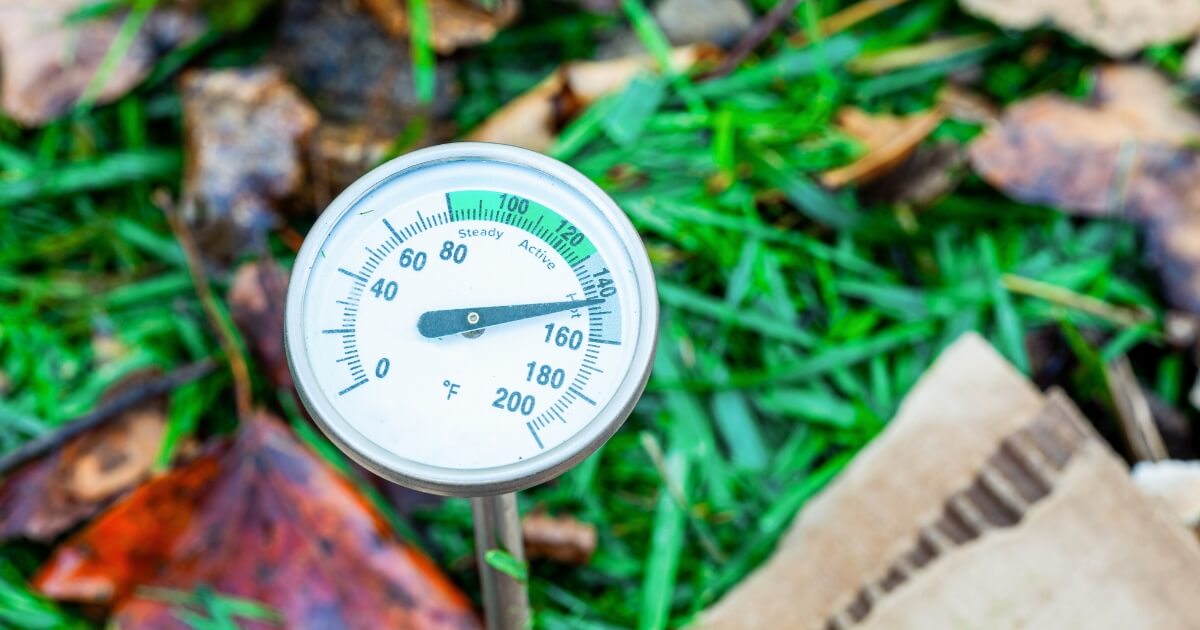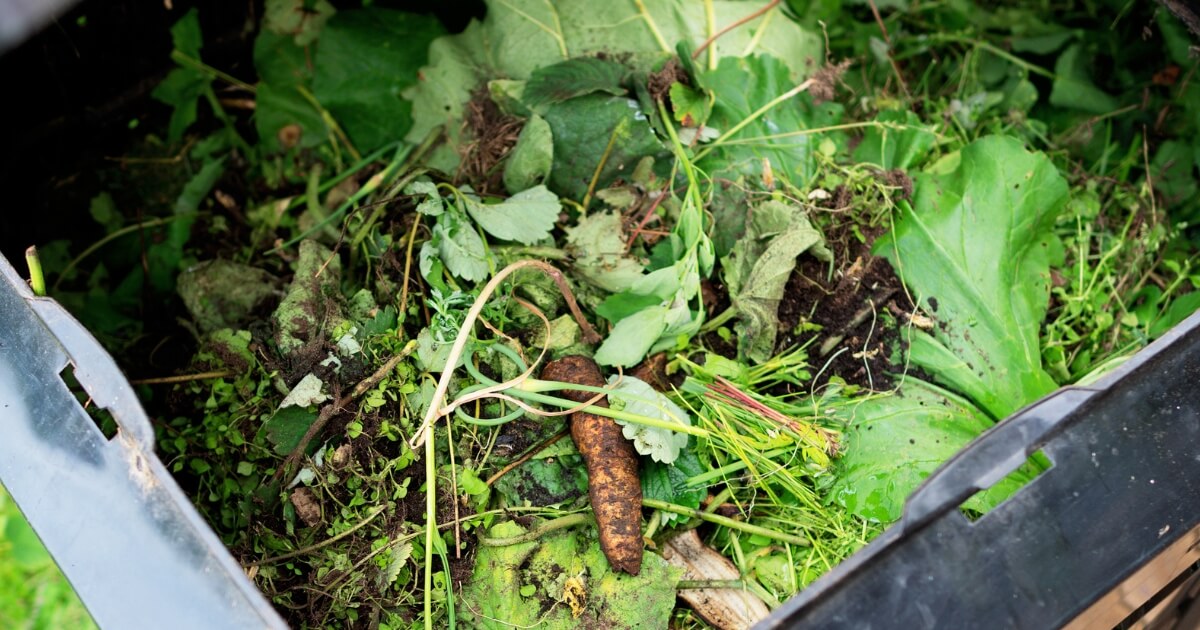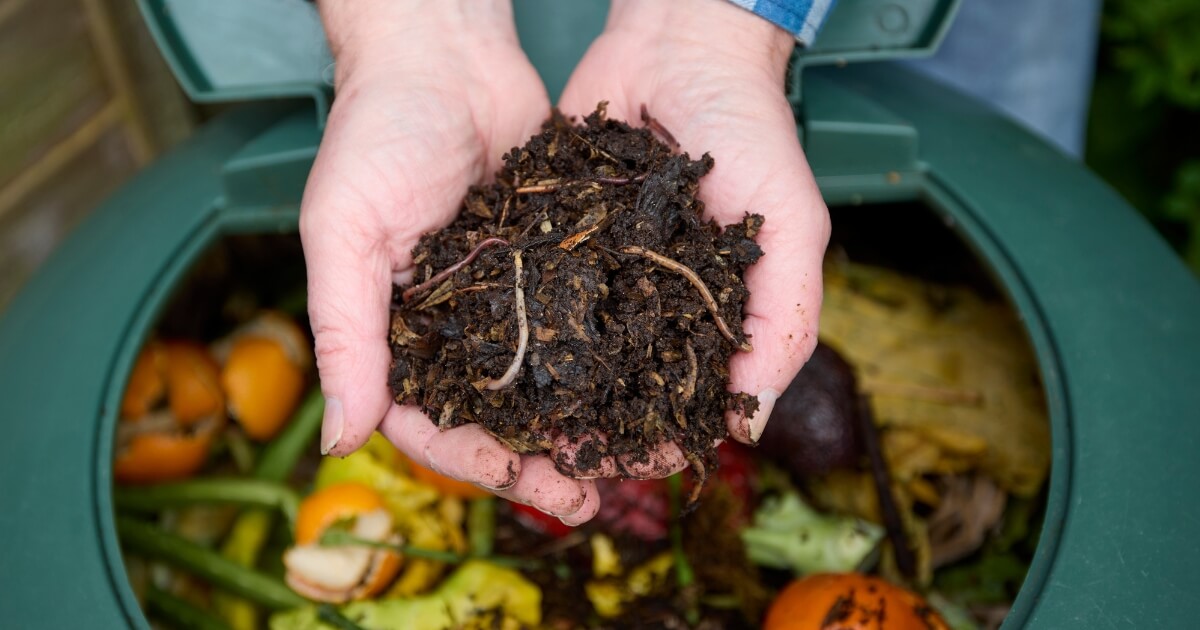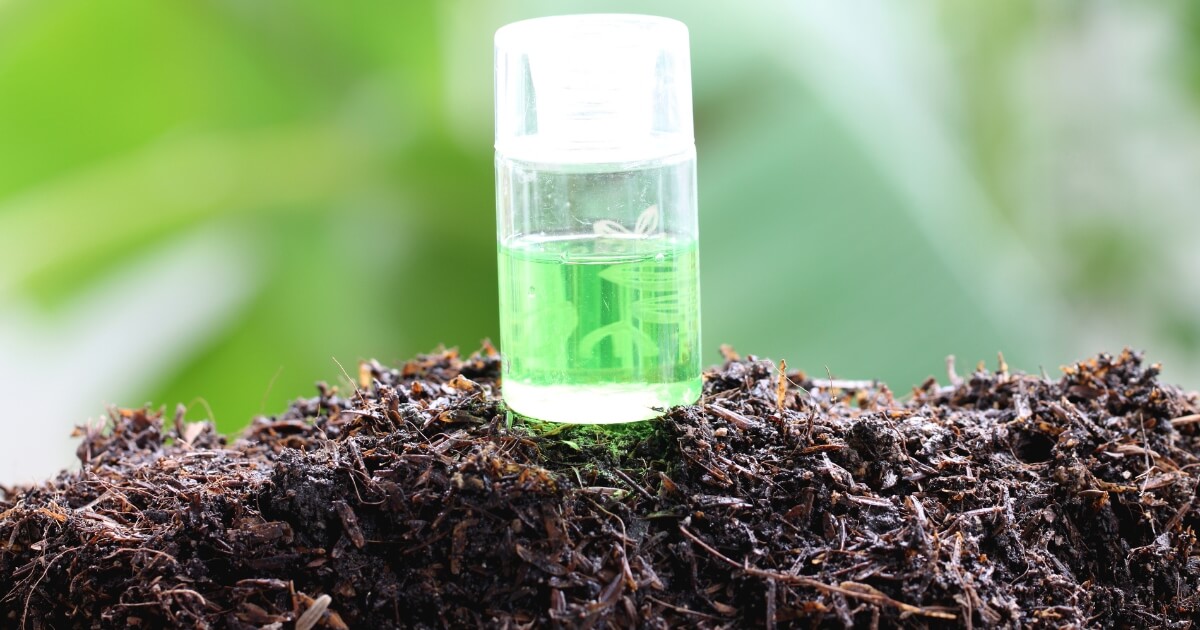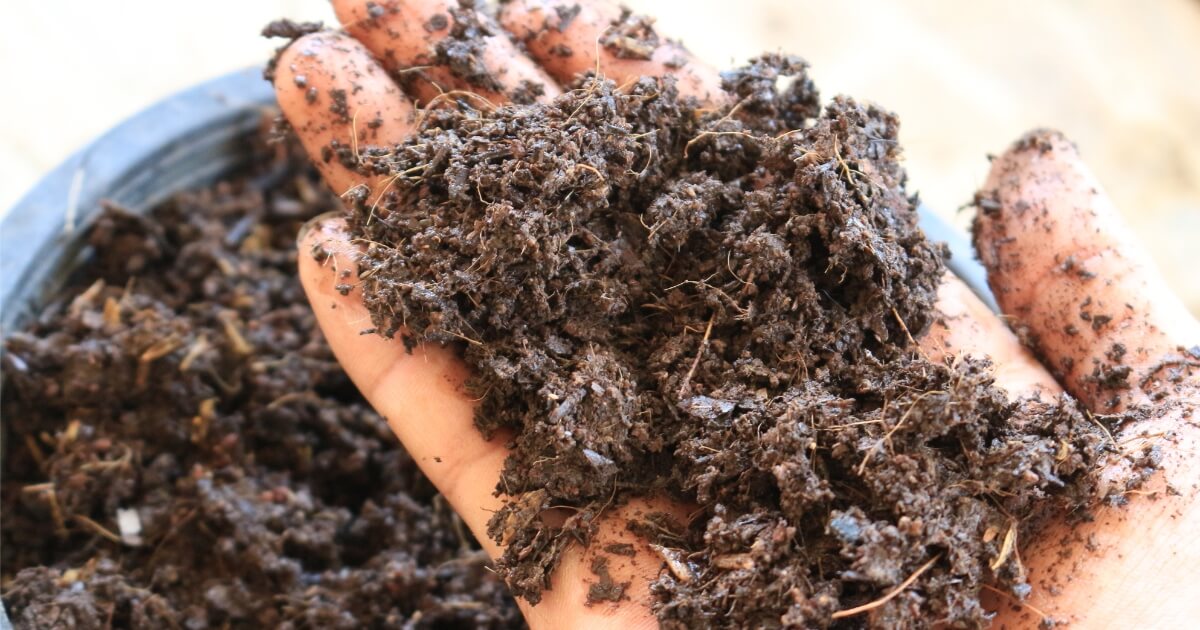Do the mushrooms that spring up across your yard after a rain irritate you?
Aside from looking unsightly, now you have to dispose of them, but many people are unsure if you can compost mushrooms safely. The excellent news is that, yes, feel free to toss those annoying mushrooms into your compost pile.
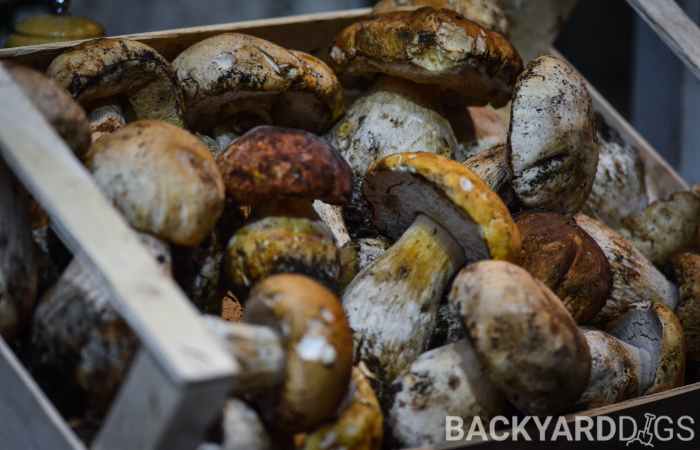
Down below, I discuss why mushrooms grow in your compost and how to deter it. I also tell you how long it takes for mushrooms to decompose and the best way to compost them.
Read along to learn how to compost fungus like mushrooms successfully!
Why Are Mushrooms Growing In Compost?
Mushroom spores can land anywhere, so there likely are many on the leaves, grass clippings, or other yard debris you add to your composter.
When your compost ingredients become too moist, the fungi spores have all they need to grow into a mushroom. A mushroom is the “fruit” of a fungus, which rises above the soil so it can spread its spores for reproduction.
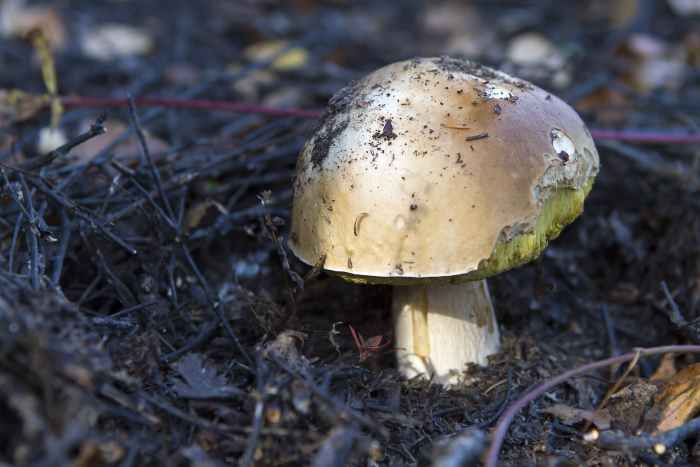
As with your yard, mushrooms seem to spring up overnight in a compost pile. You can use this visual clue as an excellent indicator the green to brown balance within your collection is out of whack.
While fungi are common in compost and do a great job helping to decompose the material, the sight of actual mushrooms can worry people and make them think the pile is now a total loss.
Luckily, you can leave the mushrooms where they are and make a few adjustments to reduce the chance new mushrooms will grow into maturity on your compost pile.
Related | What Is Mushroom Compost?
How To Deter Mushroom Growth In Compost
There are ways to decrease the change compost fungus-like mushroom spores grow into toadstools and take over your pile.
The first step is to keep the balance of carbon and nitrogen ingredients at a proper level. Mushrooms thrive on any type of cellulose material like:
- Newspaper
- Cardboard
- Sawdust or wood chips
- Leaves
If any of the above materials are too moist, you have given the fungus a chance to accelerate growth.
Turning your compost pile regularly with a pitchfork helps aerate the mix and reduces the moisture levels mushrooms love. Turning also breaks up the mycelium threads growing in the compost that will turn into mushrooms if left undisturbed.
Lastly, mushrooms grow best in cool to slightly warmer temperatures, which means keeping an optimal high-heat level inside your pile will deter them from growing.
How Do Mushrooms Decompose?
A mushroom will naturally begin to decompose after it grows long enough to release its spores. Once the spores disperse, the lifecycle of the mushroom is complete.
At this stage, the mushroom will begin to wilt, and the flesh may shrivel. If you leave the toadstool alone, insects or animals will start to eat the tissue as it starts to decay.
Microorganisms in the surrounding soil will also feast on the rotting flesh, breaking the mushroom flesh down further into simple molecules. Plants and fungi growing nearby will then absorb these molecules, completing the cycle of life.
Related | Are Mushrooms Decomposers?
How Long Does It Take For A Mushroom To Decompose?
Outside a composter, it takes anywhere from a week to a year for a mushroom to decompose completely.
Expect the process to finish swiftly in regions where the climate is humid or rainy. In arid regions, the flesh of the dead mushroom may dry up quickly, reducing the speed in which it can break down.
Mushrooms inside a well-tended compost pile can become unrecognizable in a few days and be broken down entirely within a week or two.
Worms especially love to eat mushrooms, so if you have vermicomposter you may see no trace of mushroom scraps after only a day or two.
How To Compost Mushrooms
You should consider mushrooms to be a star ingredient for your compost pile because they provide these extra benefits:
- Fungi speeds up the decomposition of all ingredients in the composter
- Mushroom microbes help create and maintain heat within the pile
- When bacteria aren’t as active, mushroom fungi keeps on working
Mushrooms, whether wild or store-bought, can be put in your compost in any quantity as long as you are offsetting the material with the appropriate ratio of brown ingredients.
It’s best to chop or crumble up whole mushrooms into smaller pieces before adding it to your compost, which helps them break down quicker.
Always turn the pile thoroughly after you add mushrooms since they tend to hold a lot of moisture, and having them incorporate with drier brown material like shredded cardboard or leaves will keep the compost from getting soggy.
What If The Mushrooms Are Poisonous?
Some mushrooms are poisonous to ingest, so there is a possibility that animals or pests that forage through your compost pile and eat mushroom scraps could get sick or die.
Most mushrooms that grow on our lawns or in our planters are nonpoisonous, but unless you are a true mushroom expert, there is no guarantee.
If you are unsure about the safety of the species of mushrooms you are adding to your compost, use a container with lids or doors that animals cannot enter, or keep tightly-woven screening or some other barrier between you and nosy pets and wildlife.
Using poisonous mushrooms in your compost shouldn’t create any issues otherwise. The flesh of the fungus will decompose and add their nutrients to the compost medium with no harm to the future plants you spread it on.
In Summary
The wild mushrooms that grow in my yard are plentiful. I love having free buckets of material that enrich my compost with phosphorus, potassium, and copper, which mushroom provide in abundance and plants love.
I hope the information in this article highlights the benefits of using mushrooms in compost and how to avoid common problems.
Now you can recycle those pesky toadstools into fertile compost to help grow beautiful flowers and abundant crops of veggies from your garden!
